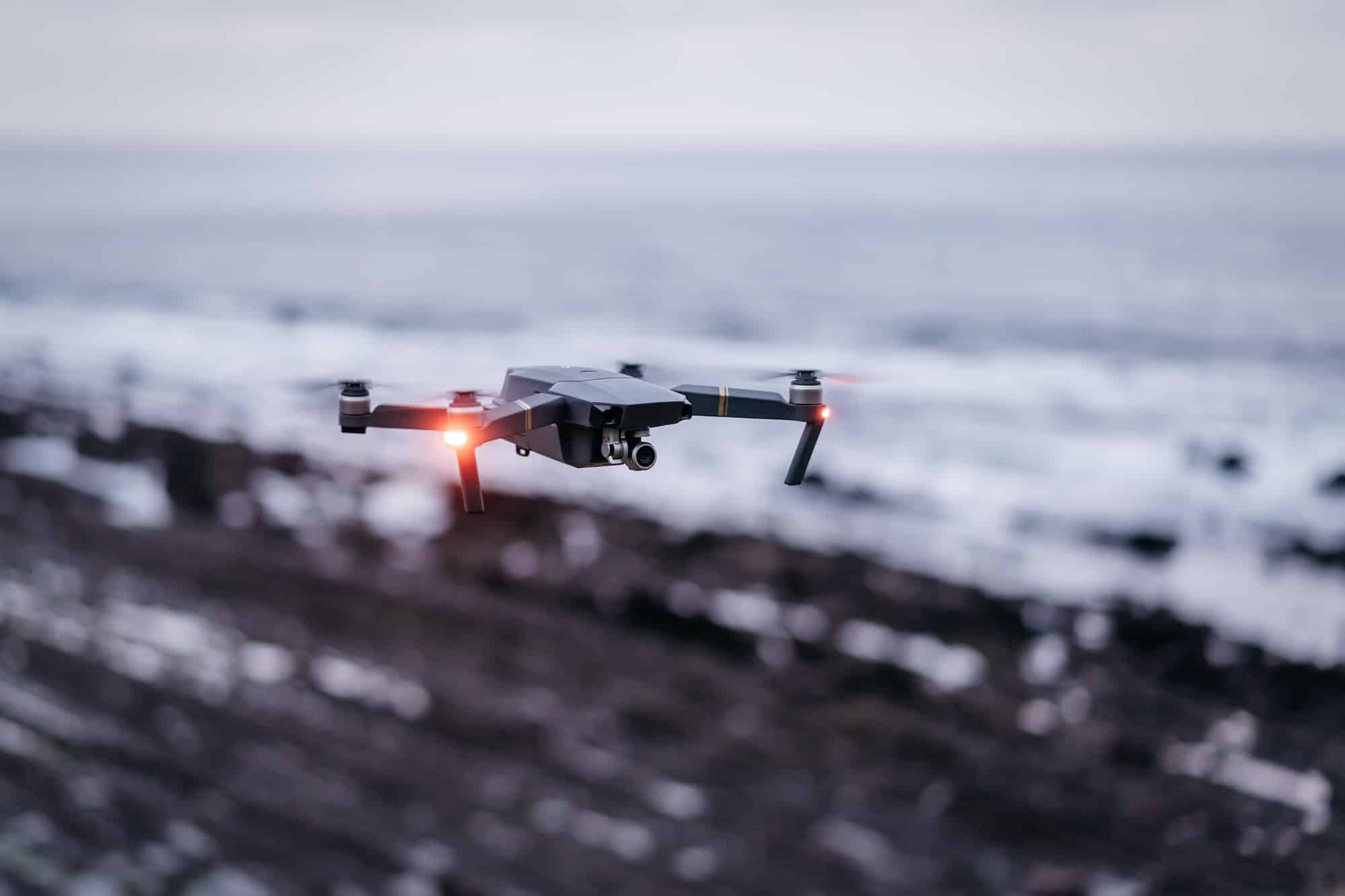Can you imagine a time when drones are as commonplace as smartphones? We are living in an era where technology is advancing at a dazzling pace. As each day passes, new discoveries are made, innovations are created, and the world becomes more interconnected. Drones, or unmanned aerial vehicles (UAVs), are at the forefront of this technological revolution. Over the past decade, they have grown from niche devices used primarily by the military to consumer goods with a wide range of practical applications. But how are these systems controlled, and what does the future hold for drone communication? Are we poised to see a revolution in drone control systems that will unlock new potential and redefine the way we use these high-tech devices?
##Communication Systems for Contemporary Drones
A lire également : How Can Drones Be Utilized in Personal Weather Monitoring?
To get a handle on where drone communication technology is headed, we first need to understand its current state. At present, most drones are controlled using a combination of radio signals and GPS data. The operator uses a handheld device to send instructions to the drone, which then executes the commands based on its current location. This is a relatively simple system, but it has its limitations.
For example, the range of control is often limited by the strength of the radio signal. This can be problematic in applications where the drone needs to operate over vast distances, such as long-range surveillance or delivery services. Additionally, communication can be interrupted by environmental factors like tall buildings or trees, potentially leading to loss of control.
En parallèle : What Challenges Are Faced in the Integration of Drones into National Airspace?
Despite these limitations, the use of drones in various sectors has been growing exponentially. For instance, in construction, drones are used for tasks like site inspections, surveying, and mapping. They offer a safer and more efficient alternative to manual labor, reducing the risk of accidents and cutting down on time and resources. The ability to gather high-quality aerial data in real-time has proven invaluable in this field.
##The Future of Drone Communication: Beyond Radio Signals
As the demand for drones continues to rise, so does the need for more sophisticated control systems. Several promising developments are on the horizon that could revolutionize drone communication.
One of the most exciting is the move towards autonomous flight control. Rather than being manually controlled by an operator, future drones could be programmed to carry out tasks independently. Algorithms based on Artificial Intelligence (AI) would allow drones to navigate their environment, avoid obstacles, and make decisions in real-time. This would not only increase the potential applications of drones, but also their efficiency and safety.
Another future development is the use of 5G networks for drone communication. 5G would offer significantly faster data transmission speeds and lower latency than current systems. This would allow for more reliable, high-quality video streaming and improved responsiveness, opening up new possibilities in areas like live broadcasting, emergency response, and remote inspection.
##Communication and Swarm Technology: UAVs in Sync
The concept of drone swarms – groups of drones coordinated to work together – is another frontier in drone technology. Such systems would require a high level of communication, including the use of advanced algorithms to coordinate the actions of multiple drones.
Swarm technology has a range of potential applications. For example, it could be used in aerial displays, where dozens or even hundreds of drones are coordinated to create intricate patterns or images in the sky. On a more practical level, drone swarms could be used in search and rescue operations, with multiple drones working together to cover a large area quickly and efficiently.
Swarming also has significant potential in the field of construction. For instance, a swarm of drones could be used to carry out large-scale inspections or surveys, dividing the task between multiple UAVs to speed up the process.
##Securing the Skies: Cybersecurity and Drone Communication
As drone communication systems become more advanced, protecting them from malicious attacks becomes increasingly important. Cybersecurity is, therefore, a critical aspect of future drone communication development.
Researchers are working on technologies to secure drone communication channels, safeguarding them from potential hacking attempts. These include the development of encryption algorithms and secure communication protocols.
There is also ongoing research into drone detection and counter-UAV systems. These technologies aim to identify unauthorized drones in restricted areas and prevent them from causing harm. This is particularly important in areas such as airports, military bases, and critical infrastructures where unauthorized drone activity could pose a significant risk.
The future of drone technology looks incredibly promising. As these developments continue to unfold, the applications and potential of UAVs will continue to expand. From autonomous flight control to drone swarms, the future of drone communication is a fascinating field that is sure to captivate scholars, technologists, and enthusiasts alike. Making strides in this area will not only advance the technology but also bring unimaginable benefits across various sectors – truly a testament to human ingenuity and the power of innovation.
##Adapting Drone Communication Systems for Environmental Monitoring
Environmental monitoring has become a vital application for drones as we strive to better understand and preserve our planet. Unmanned aerial vehicles (UAVs) are playing a key role in monitoring wildlife, mapping terrain, and observing environmental changes and disasters in real time.
Keeping track of elusive or endangered animals becomes a less invasive task with drones. Equipped with thermal imaging cameras, they can scan vast regions quickly and efficiently, transmitting real-time data back to base stations.
Moreover, drones can reach the hardest-to-access areas, such as dense forests, mountains, or disaster zones. This means they can be used to monitor events like volcanic eruptions, wildfires, or floods. The data collected can provide invaluable insights into how our environment is changing and allows for more informed decision making.
To accomplish these tasks, drones need reliable and efficient communication systems. 5G networks and Artificial Intelligence (AI) come into play here, enabling faster data transmission and autonomous operations. AI algorithms could enable drones to adapt to changing environmental conditions, adjusting their flight paths to avoid obstacles or inclement weather.
However, this field of UAV technology requires continual research and innovation. According to Google Scholar, there are countless ongoing studies striving to enhance the capabilities of drones in environmental monitoring, thereby emphasizing the importance of this special issue.
##Communication Systems and Autonomous Drones in Real-time Decision Making
In a world where time is of the essence, drones are quickly becoming indispensable tools in various sectors for real-time decision making. With the rise of autonomous drones, we are witnessing a shift in how these aerial vehicles are being used.
The ability of drones to provide live video feeds and gather data in real time is a game changer. From emergency services making vital decisions during a crisis, to farmers monitoring crop health, the possibilities are vast.
In order to operate effectively and safely, drones need robust communication systems. Base station communications, wireless communication technologies, and AI are all key components in helping drones gather and transmit data in real time.
Autonomous drones, unlike their manually operated counterparts, rely heavily on AI and machine learning for decision making. This means they can respond to changing conditions quickly, without the need for human input.
However, as we move towards more autonomous drones, ensuring secure, reliable communication becomes even more crucial. This is a challenge that researchers and technologists are tirelessly working on to ensure the future of drone technology is not only promising but also safe.
##Conclusion: The Sky’s the Limit
The advancements in drone communication systems are opening up a wide range of opportunities, redefining what is possible with this technology. From autonomous flight control to the implementation of drone swarm technology, the developments in the communication systems for UAVs are rapidly evolving.
As the need for drones in various sectors increases, so does the demand for more sophisticated control systems. Innovations in 5G networks and AI are paving the way for faster and more reliable data transmission, which in turn is enabling new applications in fields like environmental monitoring and real-time decision making.
However, with these advancements comes the need to address cybersecurity concerns. The future of drone communication must ensure secure channels, protecting them from potential breaches or hacking attempts.
As research continues and these developments unfold, the potential and applications of UAVs will only grow. The future of drone technology is undoubtedly exciting, promising to bring immense benefits across various sectors. It’s a testament to human ingenuity and the power of innovation. As we look to the horizon, it’s clear that when it comes to drone technology, the sky’s the limit.










